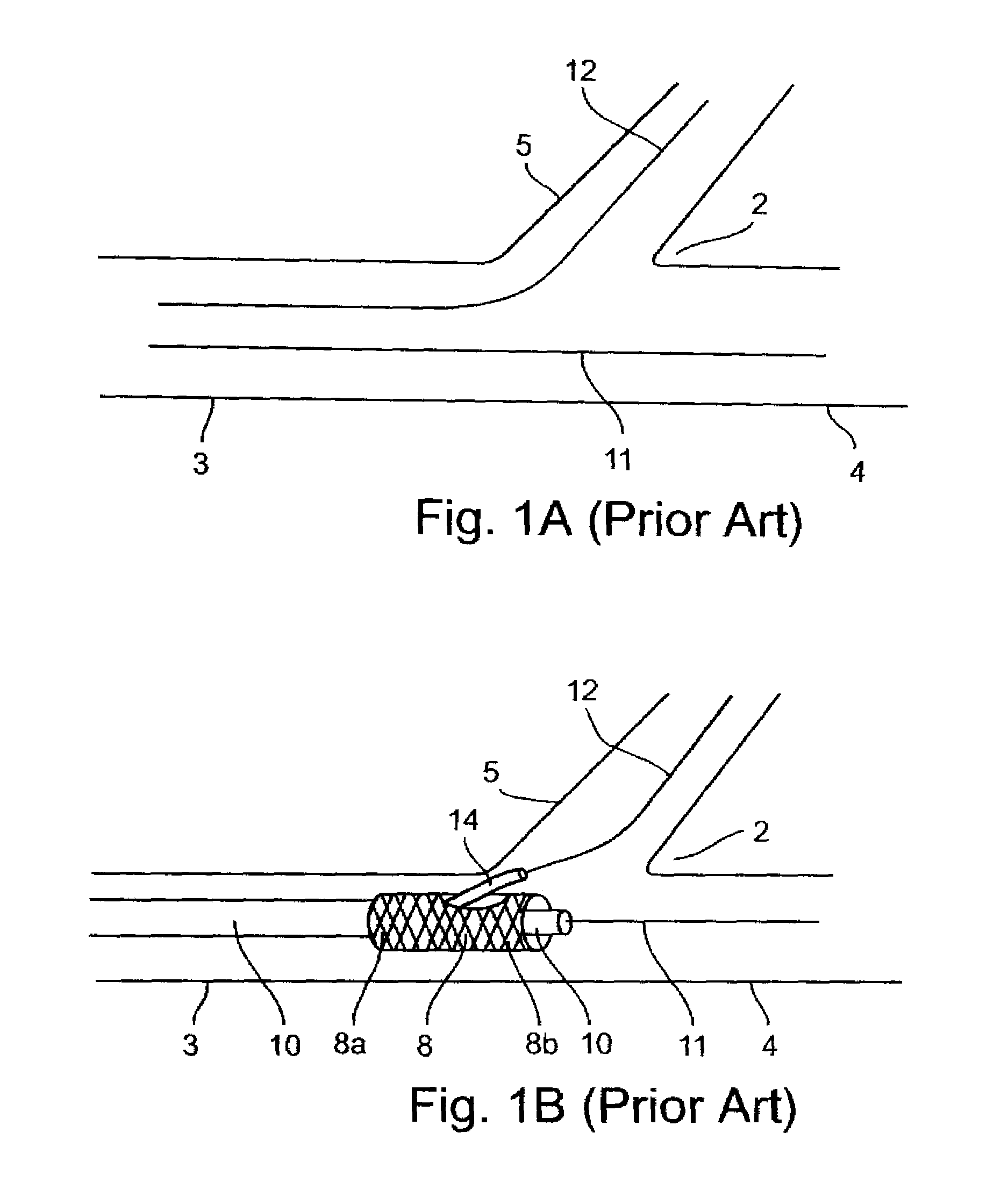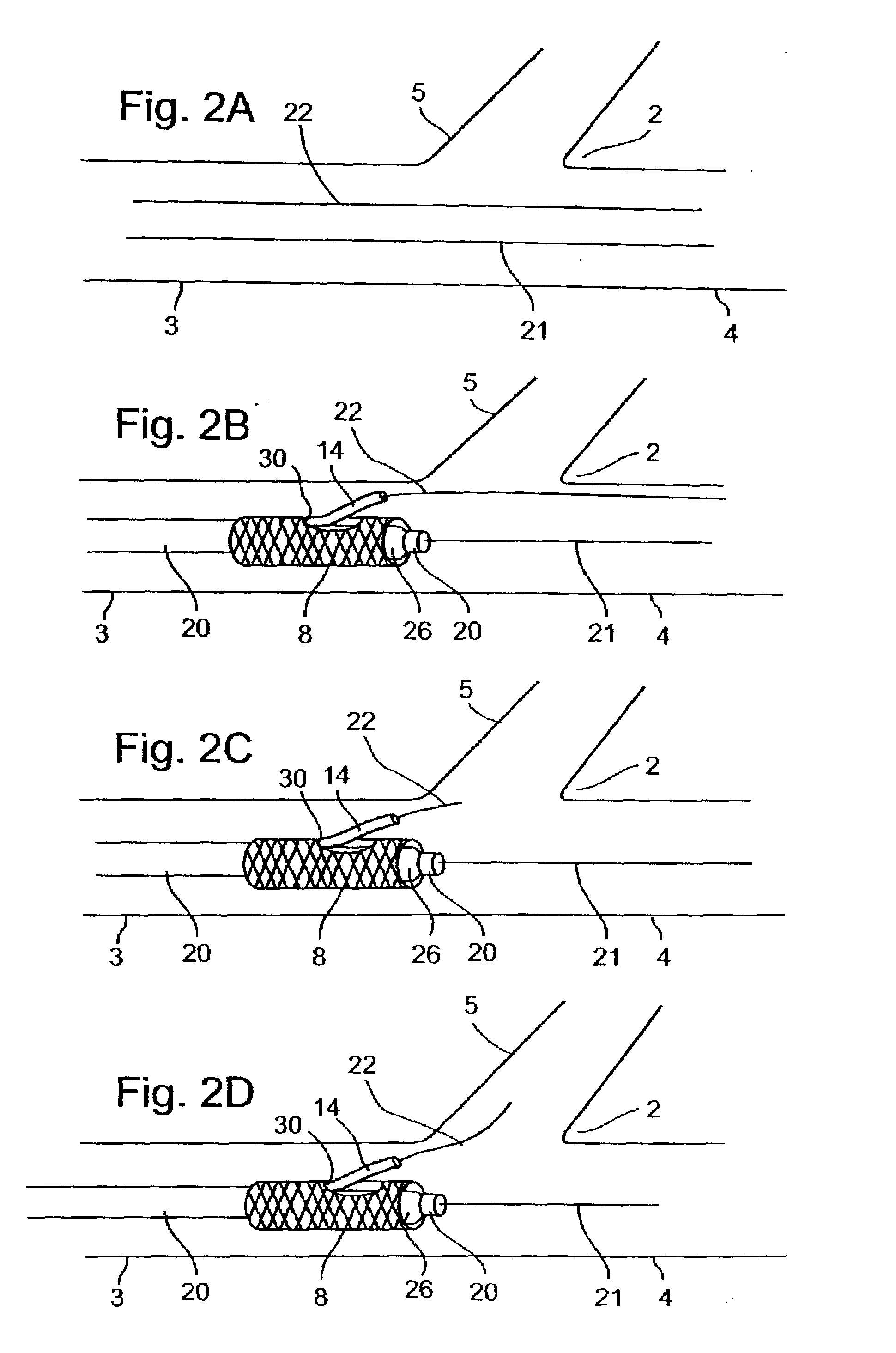Methods for deploying stents in bifurcations
a technology of stents and bifurcations, applied in the field of stent delivery, can solve the problems of particularly difficult stent delivery by the physician, and achieve the effect of reducing or eliminating the possibility of wire entanglement or cross-over
- Summary
- Abstract
- Description
- Claims
- Application Information
AI Technical Summary
Benefits of technology
Problems solved by technology
Method used
Image
Examples
Embodiment Construction
[0026]The present invention is of a method for deploying a stent at or near a bifurcation. Specifically, the method of the present invention allows insertion of two wires into two branches of a vessel while avoiding wire entanglement.
[0027]For purposes of better understanding the present invention, as illustrated in FIGS. 2-5 of the drawings, reference is first made to the two-wire method of deploying a stent in a vessel bifurcation (i.e. the prior art) as illustrated in FIGS. 1A and 1B. In the example illustrated in FIGS. 1A and 1B, the bifurcation, generally designated 2, involves a main vessel 3, which splits into a main vessel continuation 4, and a branch vessel 5. The point at which the two branches 4, 5 intersect is commonly called the “saddle point” of the bifurcation.
[0028]The stent to be deployed is generally designated 8. It includes a proximal end 8A to be deployed in the main vessel 3, and a distal end 8B to be deployed in the main vessel continuation 4. For this purpose...
PUM
 Login to View More
Login to View More Abstract
Description
Claims
Application Information
 Login to View More
Login to View More - R&D
- Intellectual Property
- Life Sciences
- Materials
- Tech Scout
- Unparalleled Data Quality
- Higher Quality Content
- 60% Fewer Hallucinations
Browse by: Latest US Patents, China's latest patents, Technical Efficacy Thesaurus, Application Domain, Technology Topic, Popular Technical Reports.
© 2025 PatSnap. All rights reserved.Legal|Privacy policy|Modern Slavery Act Transparency Statement|Sitemap|About US| Contact US: help@patsnap.com



